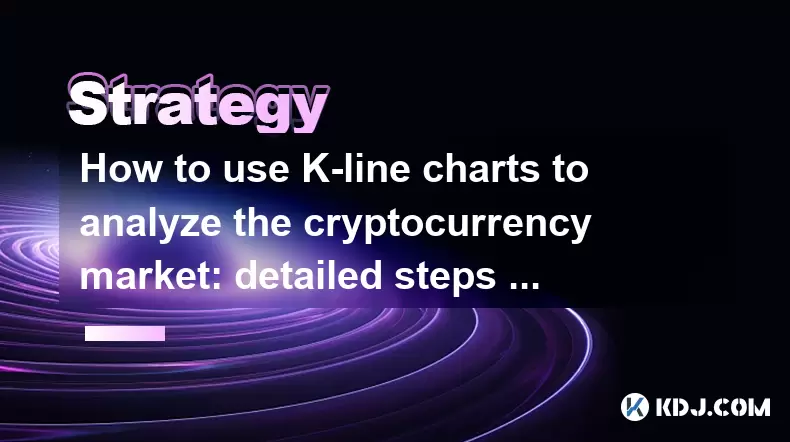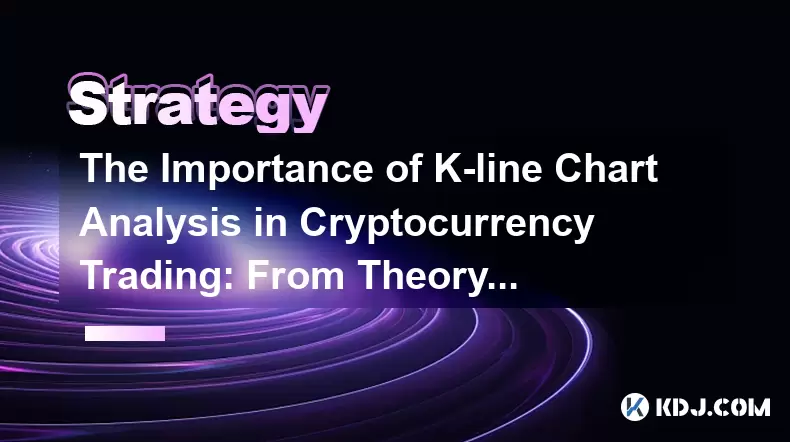-
 Bitcoin
Bitcoin $106,754.6083
1.33% -
 Ethereum
Ethereum $2,625.8249
3.80% -
 Tether USDt
Tether USDt $1.0001
-0.03% -
 XRP
XRP $2.1891
1.67% -
 BNB
BNB $654.5220
0.66% -
 Solana
Solana $156.9428
7.28% -
 USDC
USDC $0.9998
0.00% -
 Dogecoin
Dogecoin $0.1780
1.14% -
 TRON
TRON $0.2706
-0.16% -
 Cardano
Cardano $0.6470
2.77% -
 Hyperliquid
Hyperliquid $44.6467
10.24% -
 Sui
Sui $3.1128
3.86% -
 Bitcoin Cash
Bitcoin Cash $455.7646
3.00% -
 Chainlink
Chainlink $13.6858
4.08% -
 UNUS SED LEO
UNUS SED LEO $9.2682
0.21% -
 Avalanche
Avalanche $19.7433
3.79% -
 Stellar
Stellar $0.2616
1.64% -
 Toncoin
Toncoin $3.0222
2.19% -
 Shiba Inu
Shiba Inu $0.0...01220
1.49% -
 Hedera
Hedera $0.1580
2.75% -
 Litecoin
Litecoin $87.4964
2.29% -
 Polkadot
Polkadot $3.8958
3.05% -
 Ethena USDe
Ethena USDe $1.0000
-0.04% -
 Monero
Monero $317.2263
0.26% -
 Bitget Token
Bitget Token $4.5985
1.68% -
 Dai
Dai $0.9999
0.00% -
 Pepe
Pepe $0.0...01140
2.44% -
 Uniswap
Uniswap $7.6065
5.29% -
 Pi
Pi $0.6042
-2.00% -
 Aave
Aave $289.6343
6.02%
Prediction rules of currency trading band skills
Currency trading bands, influenced by fundamental factors and technical indicators, provide guidelines for trend analysis, reversal identification, and entry/exit strategies.
Jan 08, 2025 at 04:52 pm

Key Points:
- Understanding Currency Trading Bands
- Fundamental Factors Influencing Currency Bands
- Technical Indicators for Band Prediction
- Trading Strategies Utilizing Currency Bands
- Risk Management for Currency Band Trading
- FAQs on Currency Trading Band Skills
Understanding Currency Trading Bands
Currency trading bands represent predefined ranges within which exchange rates tend to fluctuate. These bands can be calculated using various methods, including the Bollinger Bands, Donchian Channels, and Keltner Channels. Traders utilize these bands to assess trend strength, identify potential reversal points, and determine optimal entry and exit levels for currency trades.
Fundamental Factors Influencing Currency Bands
Fundamental factors play a significant role in determining the boundaries of currency trading bands. These factors include:
- Economic growth: Strong economic growth generally leads to currency appreciation.
- Interest rates: Higher interest rates increase the demand for currency, resulting in appreciation.
- Inflation: High inflation erodes purchasing power and weakens the value of a currency.
- Political stability: Stable governments and policies foster currency stability.
- Fiscal policy: Expansionary fiscal policies can lead to currency depreciation.
Technical Indicators for Band Prediction
Technical indicators provide valuable insights into the behavior of currency pairs within trading bands. Some commonly used indicators include:
- Bollinger Bands (BB): BB consists of three bands – an upper band, a lower band, and a moving average. When the price touches the upper (lower) band, it may indicate overbought (oversold) conditions.
- Donchian Channels (DC): DC are constructed using the highest and lowest prices over a specific period. Trends are identified when the price moves above or below these channels.
- Keltner Channels (KC): KC are similar to BB but also incorporate Average True Range (ATR) to adjust the width of the channels based on volatility. This helps identify potential breakout zones.
Trading Strategies Utilizing Currency Bands
Various trading strategies leverage currency trading bands to capture market movements. Some popular strategies include:
- Breakout trading: Traders wait for the price to break above or below a band and then enter a trade in the direction of the breakout.
- Band reversal trading: Traders anticipate a reversal when the price approaches the upper or lower band and enter a trade accordingly.
- Range trading: Traders seek to profit from price movements within a well-defined band by buying near the lower end and selling near the upper end.
Risk Management for Currency Band Trading
Effective risk management is crucial in currency band trading. Traders should consider:
- Position sizing: Determine an appropriate position size based on account balance and risk tolerance.
- Stop-loss placement: Place stop-loss orders at predetermined levels outside the trading band to limit potential losses.
- Risk-to-reward ratio: Ensure the potential profit from a trade outweighs the potential loss.
FAQs on Currency Trading Band Skills
Q: What is the difference between Bollinger Bands, Donchian Channels, and Keltner Channels?
A: Bollinger Bands use a moving average as the middle band while Donchian Channels use the highest and lowest prices. Keltner Channels combine the principles of BB and DC by incorporating a moving average and ATR.
Q: How can I identify overbought or oversold conditions using currency bands?
A: When the price touches or exceeds the upper band, it may indicate overbought conditions, while touching or falling below the lower band may suggest oversold conditions.
Q: Is it always profitable to trade breakouts from currency bands?
A: Not necessarily. False breakouts can occur, and proper risk management is essential to avoid significant losses.
Q: How can technical indicators help in currency band trading?
A: Indicators like BB, DC, and KC provide insights into trend strength, potential reversal points, and volatility, which can assist in making informed trading decisions.
Q: What is the importance of risk management in currency band trading?
A: Effective risk management helps mitigate potential losses and ensure that trades align with the trader's risk tolerance and account capital.
Disclaimer:info@kdj.com
The information provided is not trading advice. kdj.com does not assume any responsibility for any investments made based on the information provided in this article. Cryptocurrencies are highly volatile and it is highly recommended that you invest with caution after thorough research!
If you believe that the content used on this website infringes your copyright, please contact us immediately (info@kdj.com) and we will delete it promptly.
- 2025-W Uncirculated American Gold Eagle and Dr. Vera Rubin Quarter Mark New Products
- 2025-06-13 06:25:13
- Ruvi AI (RVU) Leverages Blockchain and Artificial Intelligence to Disrupt Marketing, Entertainment, and Finance
- 2025-06-13 07:05:12
- H100 Group AB Raises 101 Million SEK (Approximately $10.6 Million) to Bolster Bitcoin Reserves
- 2025-06-13 06:25:13
- Galaxy Digital CEO Mike Novogratz Says Bitcoin Will Replace Gold and Go to $1,000,000
- 2025-06-13 06:45:13
- Trust Wallet Token (TWT) Price Drops 5.7% as RWA Integration Plans Ignite Excitement
- 2025-06-13 06:45:13
- Ethereum (ETH) Is in the Second Phase of a Three-Stage Market Cycle
- 2025-06-13 07:25:13
Related knowledge

How to use K-line charts to analyze the cryptocurrency market: detailed steps and common misunderstandings
Jun 16,2025 at 01:42pm
Understanding the Basics of K-line Charts in Cryptocurrency TradingK-line charts, also known as candlestick charts, are one of the most widely used tools for analyzing price movements in financial markets, including cryptocurrencies. These charts provide a visual representation of price action over specific time intervals and help traders make informed ...

Cryptocurrency K-line chart technical analysis manual: Learn these methods to increase your chances of making a profit
Jun 11,2025 at 11:21pm
Understanding the Basics of K-line ChartsK-line charts, also known as candlestick charts, are one of the most widely used tools in cryptocurrency trading. Each K-line represents a specific time period and provides information about the open, high, low, and close prices during that interval. The body of the candle shows the relationship between the openi...

The Importance of K-line Chart Analysis in Cryptocurrency Trading: From Theory to Practical Cases
Jun 11,2025 at 04:56pm
Understanding the Basics of K-line ChartsK-line charts, also known as candlestick charts, are a visual representation of price movements over specific time intervals. Each K-line encapsulates four critical data points: the opening price, closing price, highest price, and lowest price within a given timeframe. These charts originated in Japan during the ...

Cryptocurrency K-line Chart Interpretation Guide: How Novices Can Quickly Master the Basics of Technical Analysis
Jun 10,2025 at 08:56pm
Understanding the Basics of K-line ChartsK-line charts, also known as candlestick charts, are one of the most widely used tools in cryptocurrency trading for analyzing price movements. Each K-line represents a specific time period and shows the opening, closing, high, and low prices during that interval. For novices, grasping how to read these elements ...

How to Analyze Short-term and Long-term Trends of Cryptocurrencies through K-line Charts: A Complete Guide
Jun 15,2025 at 12:49pm
Understanding the Basics of K-line ChartsK-line charts, also known as candlestick charts, are essential tools used in cryptocurrency trading to visualize price movements over time. Each candlestick represents a specific time interval and contains four key data points: open, high, low, and close. The body of the candle shows the range between the opening...

Introduction to Cryptocurrency K-line Charts: How to Use Technical Analysis to Optimize Trading Decisions
Jun 12,2025 at 03:56pm
Understanding the Basics of K-line ChartsK-line charts, also known as candlestick charts, are one of the most essential tools used in cryptocurrency trading. Originating from Japan, these charts visually represent price movements over specific time intervals. Each candlestick displays four key pieces of information: the opening price, closing price, hig...

How to use K-line charts to analyze the cryptocurrency market: detailed steps and common misunderstandings
Jun 16,2025 at 01:42pm
Understanding the Basics of K-line Charts in Cryptocurrency TradingK-line charts, also known as candlestick charts, are one of the most widely used tools for analyzing price movements in financial markets, including cryptocurrencies. These charts provide a visual representation of price action over specific time intervals and help traders make informed ...

Cryptocurrency K-line chart technical analysis manual: Learn these methods to increase your chances of making a profit
Jun 11,2025 at 11:21pm
Understanding the Basics of K-line ChartsK-line charts, also known as candlestick charts, are one of the most widely used tools in cryptocurrency trading. Each K-line represents a specific time period and provides information about the open, high, low, and close prices during that interval. The body of the candle shows the relationship between the openi...

The Importance of K-line Chart Analysis in Cryptocurrency Trading: From Theory to Practical Cases
Jun 11,2025 at 04:56pm
Understanding the Basics of K-line ChartsK-line charts, also known as candlestick charts, are a visual representation of price movements over specific time intervals. Each K-line encapsulates four critical data points: the opening price, closing price, highest price, and lowest price within a given timeframe. These charts originated in Japan during the ...

Cryptocurrency K-line Chart Interpretation Guide: How Novices Can Quickly Master the Basics of Technical Analysis
Jun 10,2025 at 08:56pm
Understanding the Basics of K-line ChartsK-line charts, also known as candlestick charts, are one of the most widely used tools in cryptocurrency trading for analyzing price movements. Each K-line represents a specific time period and shows the opening, closing, high, and low prices during that interval. For novices, grasping how to read these elements ...

How to Analyze Short-term and Long-term Trends of Cryptocurrencies through K-line Charts: A Complete Guide
Jun 15,2025 at 12:49pm
Understanding the Basics of K-line ChartsK-line charts, also known as candlestick charts, are essential tools used in cryptocurrency trading to visualize price movements over time. Each candlestick represents a specific time interval and contains four key data points: open, high, low, and close. The body of the candle shows the range between the opening...

Introduction to Cryptocurrency K-line Charts: How to Use Technical Analysis to Optimize Trading Decisions
Jun 12,2025 at 03:56pm
Understanding the Basics of K-line ChartsK-line charts, also known as candlestick charts, are one of the most essential tools used in cryptocurrency trading. Originating from Japan, these charts visually represent price movements over specific time intervals. Each candlestick displays four key pieces of information: the opening price, closing price, hig...
See all articles

























































































